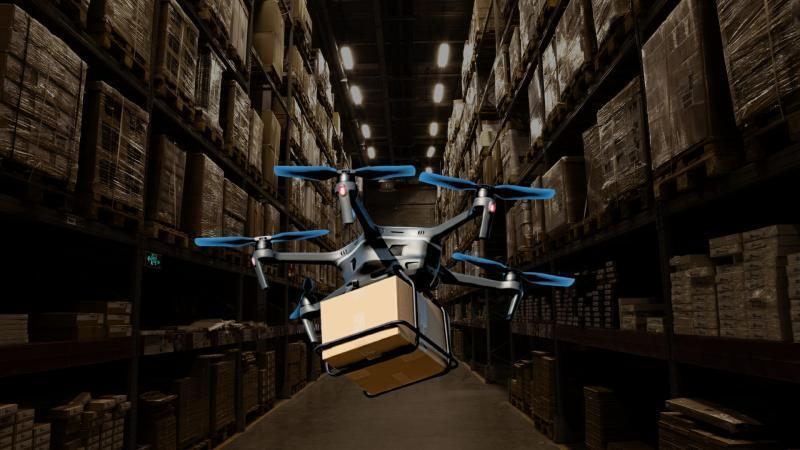
New Tech Optimises Drone Fleets for Faster, Greener Deliveries
The rise of e-commerce has placed immense pressure on logistics systems, leading to congested roads, increased carbon emissions, and longer delivery times. The last-mile delivery problem, in particular, has become a major challenge for businesses, as they struggle to efficiently and sustainably transport packages to customers. In an effort to address this issue, researchers have developed a novel algorithm that optimizes drone delivery schedules, enabling warehouses to efficiently manage varied drone fleets and ensure parcels reach customers quickly.
The “Drone Warehouse Problem” is a crucial logistics challenge that refers to the difficulty of managing multiple drone fleets, each with its own unique characteristics, such as flight times, capacities, and weather conditions. This complexity makes it hard for warehouses to determine the most efficient way to allocate drones for delivery, resulting in delayed or cancelled shipments.
The new algorithm, developed by researchers at [University/Research Institution], tackles the Drone Warehouse Problem by creating a dynamic scheduling system that takes into account various factors, including:
- Drone availability and capacity
- Package demand and priority
- Weather conditions and air traffic regulations
- Drone maintenance and recharging schedules
By analyzing these factors, the algorithm generates an optimal schedule for each drone, ensuring that packages are delivered quickly and efficiently. This approach enables warehouses to manage a mixed fleet of drones, each with its own strengths and weaknesses, and allocate them to the most suitable delivery routes.
The benefits of this technology are numerous. For starters, it enables faster delivery times, as drones can fly directly to customers, bypassing congested roads and reducing the risk of accidents. This, in turn, leads to increased customer satisfaction and loyalty.
Moreover, the algorithm’s focus on sustainability means that it can help reduce carbon emissions by minimizing the number of drones needed for delivery and optimizing their routes. This is particularly significant, as the environmental impact of drone delivery is a growing concern.
The algorithm’s potential applications are vast. It can be used in various industries, including:
- E-commerce: Online retailers can use the algorithm to optimize their drone delivery logistics, reducing delivery times and increasing customer satisfaction.
- Healthcare: Medical supplies and organs for transplantation can be delivered quickly and efficiently using drones, saving lives and improving healthcare outcomes.
- Food delivery: Restaurants and food delivery services can use drones to transport hot meals, reducing delivery times and increasing customer satisfaction.
The researchers behind the algorithm believe that it has the potential to revolutionize the logistics industry, making it more efficient, sustainable, and customer-centric.
“In the future, we envision a world where drones are an integral part of the logistics ecosystem,” said [Researcher’s Name], lead researcher on the project. “Our algorithm is a crucial step towards making that vision a reality, and we’re excited to see the impact it will have on the industry.”
As the demand for fast and sustainable delivery continues to grow, the need for innovative solutions like this algorithm becomes increasingly pressing. With its potential to optimize drone fleets and reduce carbon emissions, this technology is poised to play a significant role in shaping the future of logistics.
News Source:
https://researchmatters.in/news/novel-algorithm-tackles-drone-warehouse-problem-faster-deliveries






